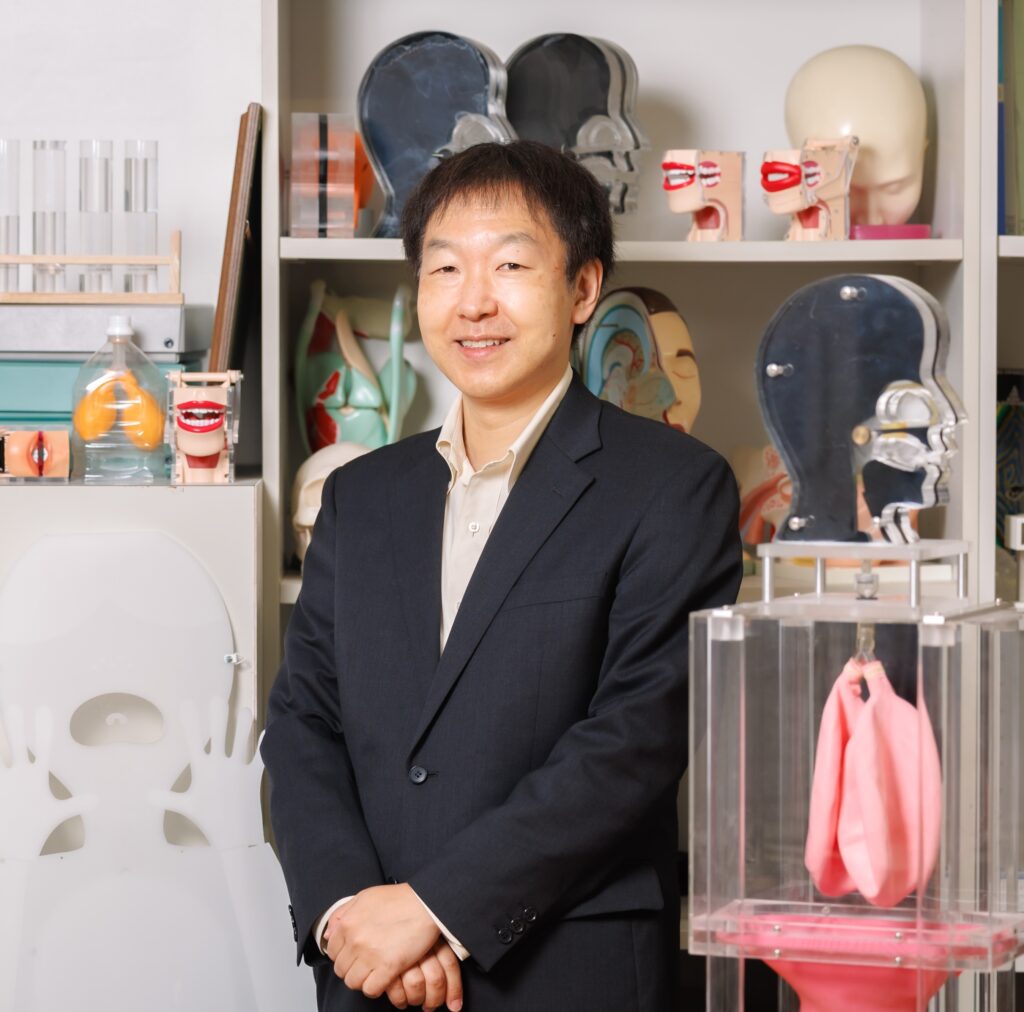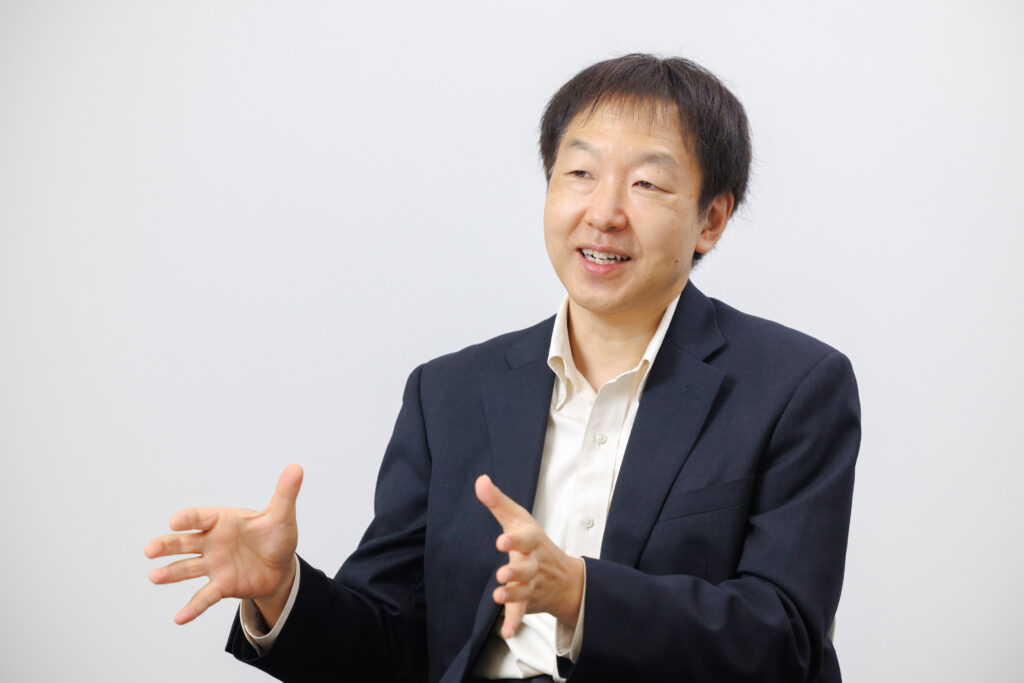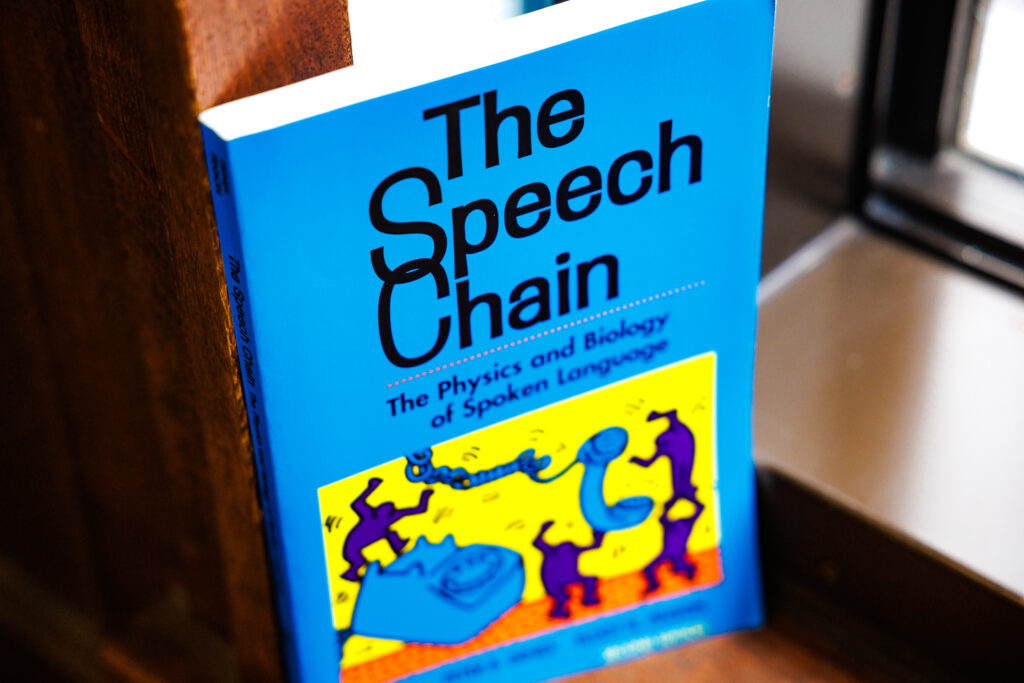
Professor Arai Takayuki of the Faculty of Science and Technology researches speech; a medium of human communications. Here he outlines examples of his research for society, from language education through to medical care and social welfare, and speaks about the charm of a field transcending the boundaries of science and the humanities.
There are various ways in which humans communicate with each other, but here I will introduce just one: speech. My field of expertise is speech communication, and I am involved in the research of speech from an academic perspective in order to scientifically clarify the mechanisms behind the multi-faceted phenomena of speech. I am also striving to turn the knowledge I have acquired through my own research into a tangible form that will prove useful for education, social welfare, medical care and other social aspects.
For example, I analyze speech with the use of computers, examine the processing mechanisms pertaining to speech, and analyze the differences in which non-native and native speakers pronounce and hear words, and I then apply the results of this to language education. I am also taking part in a project that uses a software known as “My Voice,” which enables people who have lost their voices due to ALS or other ailments to communicate with their own voices. In addition, I am also involved in discovering what makes speech easier to hear for elderly people and the disabled. In the field of English language, I supervise and am involved in providing experimental tools that enable children to acquire English sounds, for an NHK (Japan’s only public broadcaster) educational children’s TV program known as “Let’s Enjoy English with Orton.” In one of the shows featuring the pronunciation of “th” I used a rubber band hooked between the upper teeth and the tip of the tongue as a tool to enable children to correctly pronounce the “th” sound in “that”.
Experiments in airborne droplets using models of the vocal tract contribute to preventing contagion

Instead of just computers, I also proactively use models of vocal tracts, the lungs and other parts of the body in my research. Models of vocal tracts, through which people’s voices pass, are made from acoustic tubes, and two Japanese researchers were the world’s first persons to produce vowels based on their measurements in the 1930s. When a sound source is passed through the tube, artificially-produced “a e i o u” vowels that sound exactly like the human voice are emitted. The most recent vocal tract created by my team enables the actual shape to be seen, and this is being effectively used by speech therapists and other people involved in medical care to teach people about the mechanisms of pronunciation. In addition, we also recently ran verification experiments related to the prevention of COVID-19 contagion to track the emission of airborne droplets with the use of vocal tract models.
I first became fascinated by sounds as a child. I was born into a family of classical music lovers, and I was constantly surrounded by music and even learned to play the violin. Another major influence was the trouble I had hearing and pronouncing German after we moved to Germany when I was around ten years old. We returned to Japan when I became the sixth grade, and I later studied acoustics in the Faculty of Science and Technology, but I eventually also developed an interest in linguistics, which is part of the humanities.
Transcending the boundaries between sciences and humanities to concentrate on interdisciplinary studies
I later received the opportunity to study in the US, the leader in the field of speech research, as a researcher. While there, I learned that speech is connected to language and hearing, as well as to the brain and many other organs in the body, and that there are opportunities for interdisciplinary studies with themes that cover a wide range of subjects. Having obtained the impression that this is a field that does not need to draw lines between the sciences and the humanities, which I believe is the way academia should be, I used my experience as an exchange student to approach my research in a way that transcends the boundaries that separate the academic fields.
There are many themes that I wish to explore in the future, one of which is to integrate computers into my models to create devices that will prove useful throughout the world. For example, getting computers to recognize human voices, and then getting the integrated vocal tract model to vocally produce phrases based on this. If this system could be applied to robotics, it may be possible for robots to be able to chat to elderly people and thereby prevent the onset of dementia. The goal of my research is to produce results that will contribute to medical care and social welfare by treating and providing support for various ailments.
The book I recommend
“The Speech Chain”
by Peter B. Denes and Elliot N. Pinson, Waveland Press, Inc.

I first read this book as a textbook when studying speech communication in the US. Discovering that speech communication involves various parts of the body as well as perception and formation intrigued me. Written in English but easy to read, any student from high school up would find this interesting.
-
Takayuki Arai
- Professor
Department of Information and Communication Sciences
Faculty of Science and Technology
- Professor
-
Completed a doctoral course in Electrical and Electronics Engineering, Faculty of Science and Technology, Sophia University, after graduating from the Department of Electrical and Electronics Engineering. Was a visiting researcher at overseas research institutes, and full-time assistant, assistant professor and associate professor in the Faculty of Science and Technology, Sophia University, prior to assuming his current position.
- Department of Information and Communication Sciences
Interviewed: October 2022